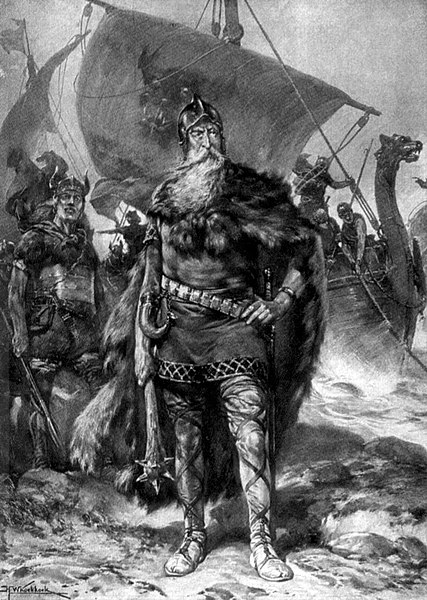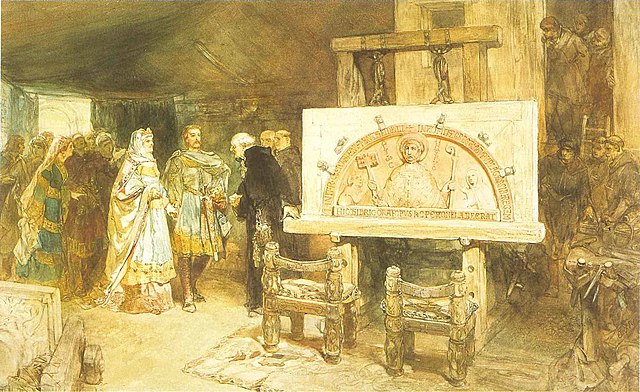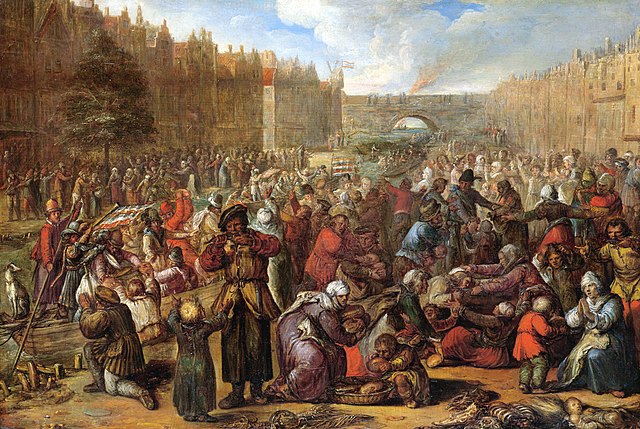The County of Holland was a state of the Holy Roman Empire and from 1433 part of the Burgundian Netherlands, from 1482 part of the Habsburg Netherlands and from 1581 onward the leading province of the Dutch Republic, of which it remained a part until the Batavian Revolution in 1795. The territory of the County of Holland corresponds roughly with the current provinces of North Holland and South Holland in the Netherlands.
Rorik of Dorestad in a 1912 illustration by Hermanus Willem Koekkoek
Dirk VI, Count of Holland, 1114–1157, and his mother Petronella visiting the work on the Egmond Abbey, Charles Rochussen, 1881.
Count Willem II of Holland Granting Privileges by Caesar van Everdingen and Pieter Post, 1654.
The Relief of Leiden by the Geuzen in 1574, by Otto van Veen.
In the history of the Low Countries, the Burgundian Netherlands or the Burgundian Age is the period between 1384 and 1482, during which a growing part of the Low Countries was ruled by the Dukes of Burgundy. Within their Burgundian State, which itself belonged partly to the Holy Roman Empire and partly to the Kingdom of France, the dukes united these lowlands into a political union that went beyond a personal union as it gained central institutions for the first time.
Jean Wauquelin presenting his 'Chroniques de Hainaut' to Philip the Good, in Mons, County of Hainaut, Burgundian Netherlands.
Members of the Privy Council during the solemn Funeral of Albert VII of Austria






